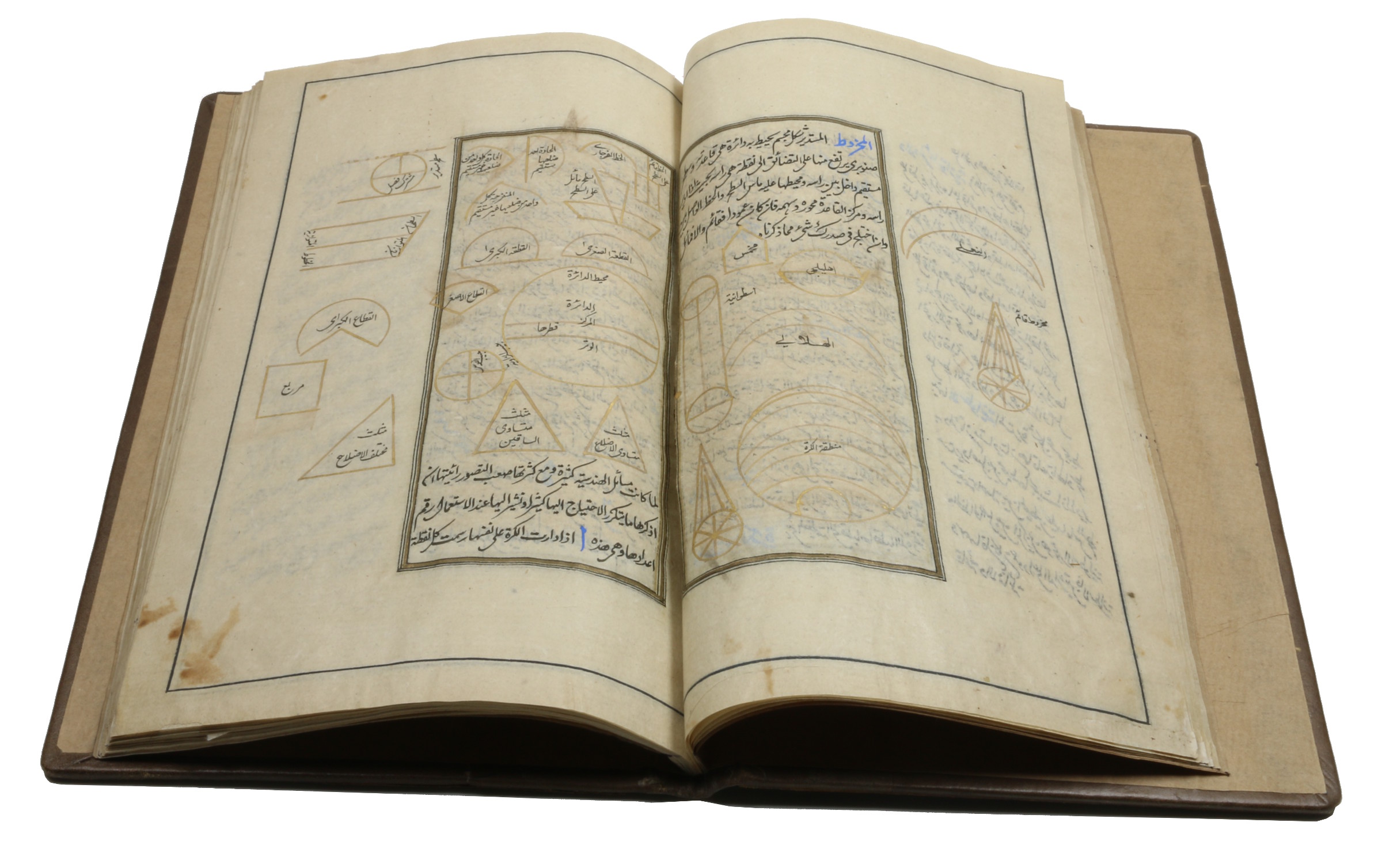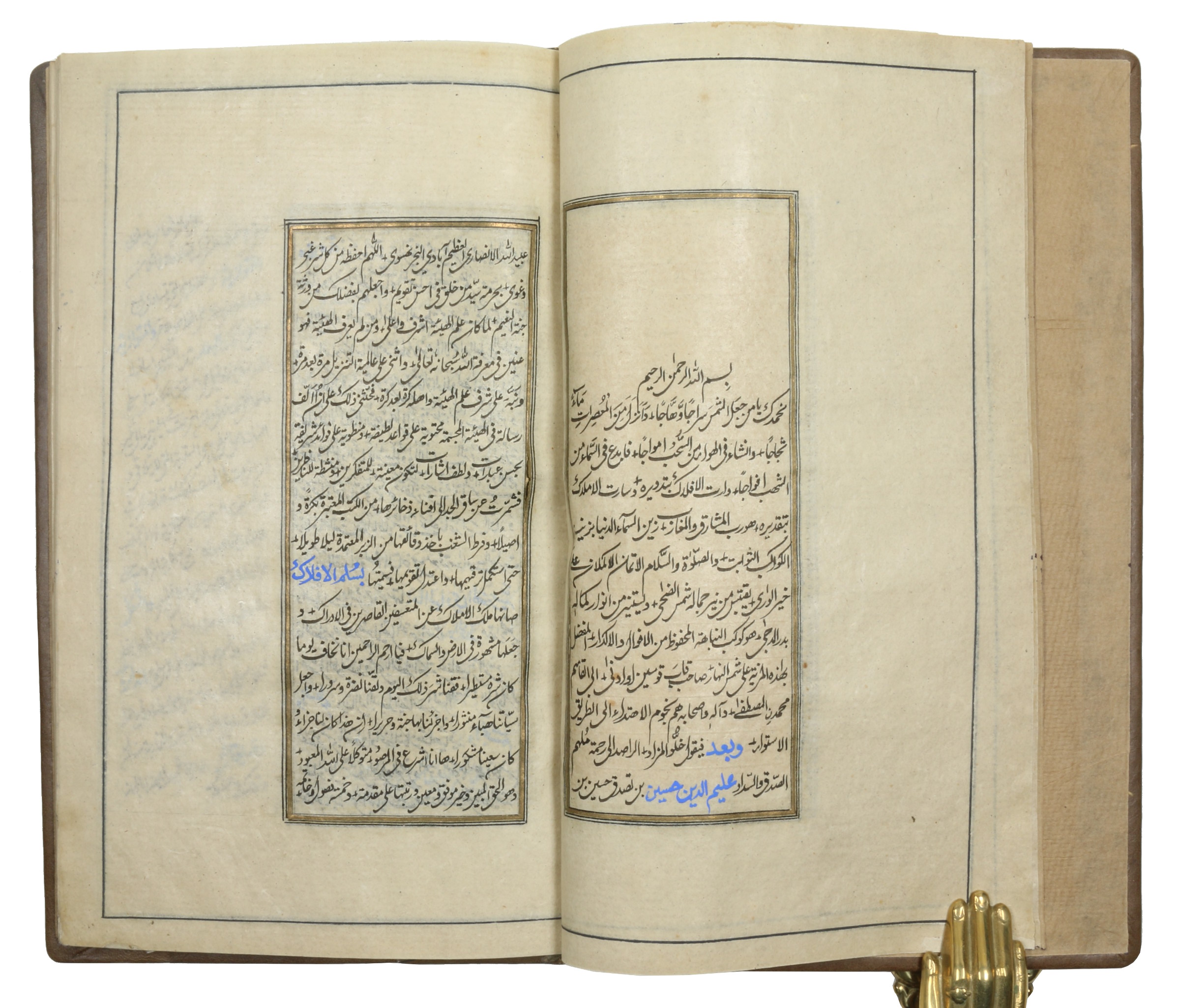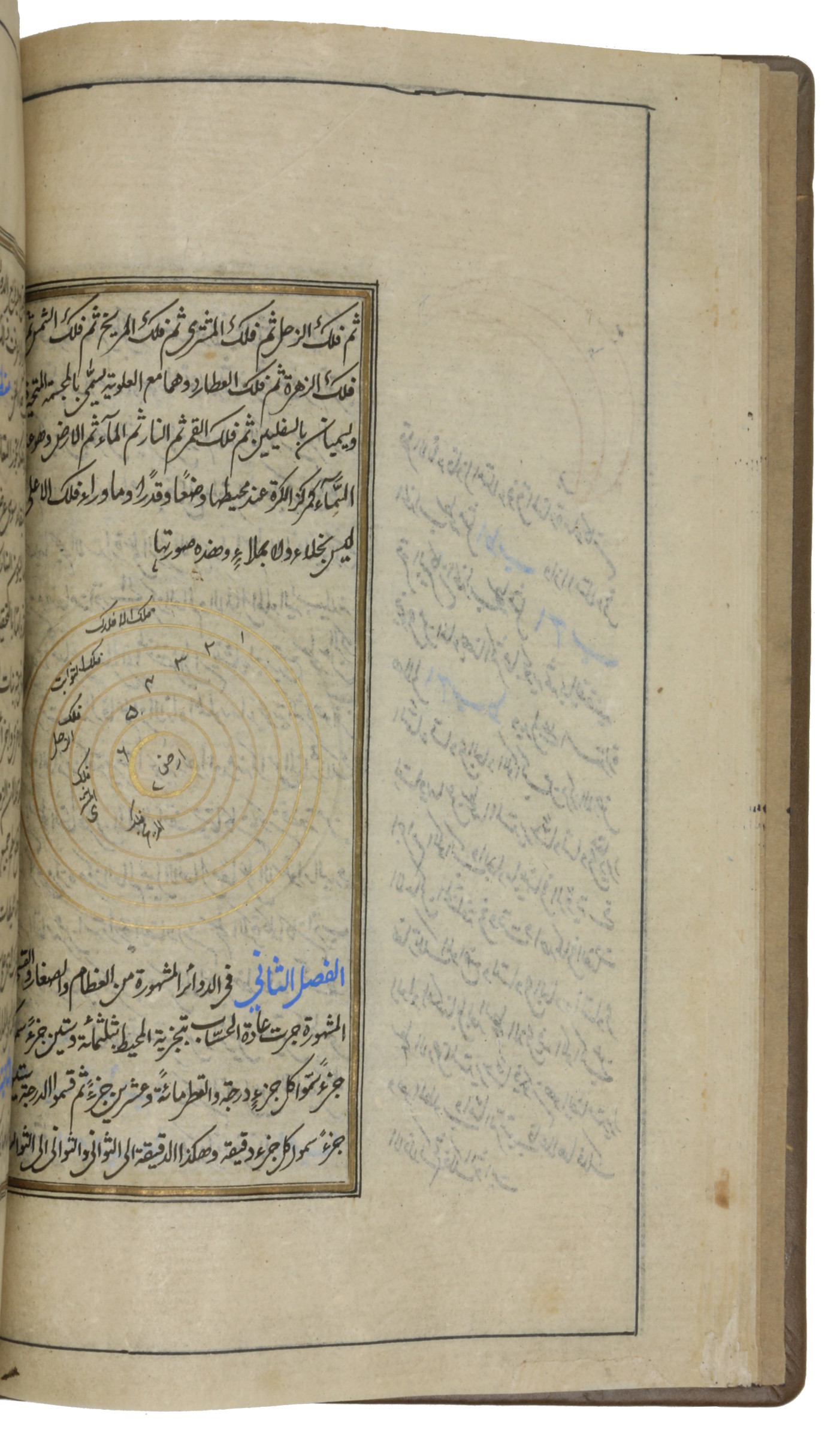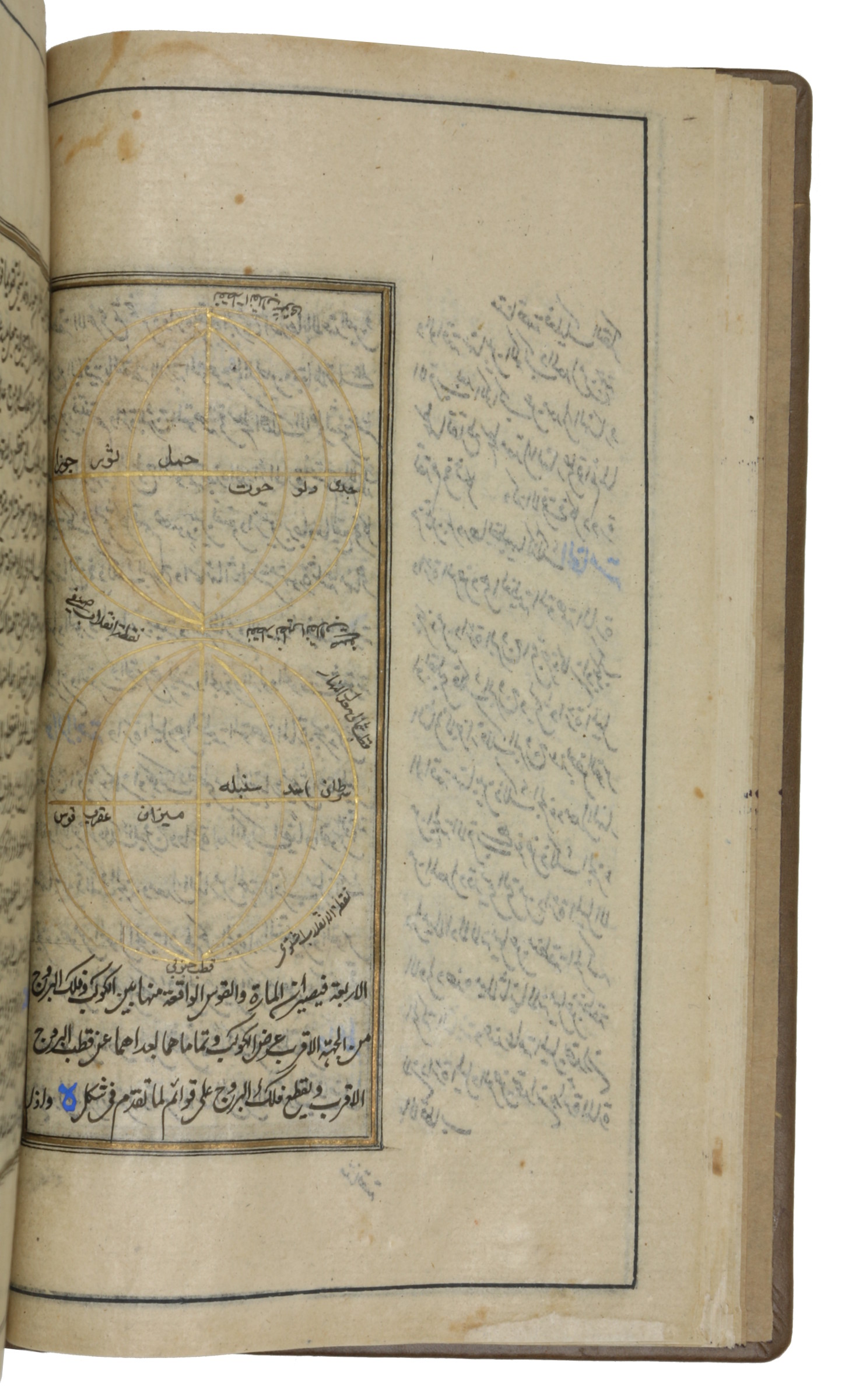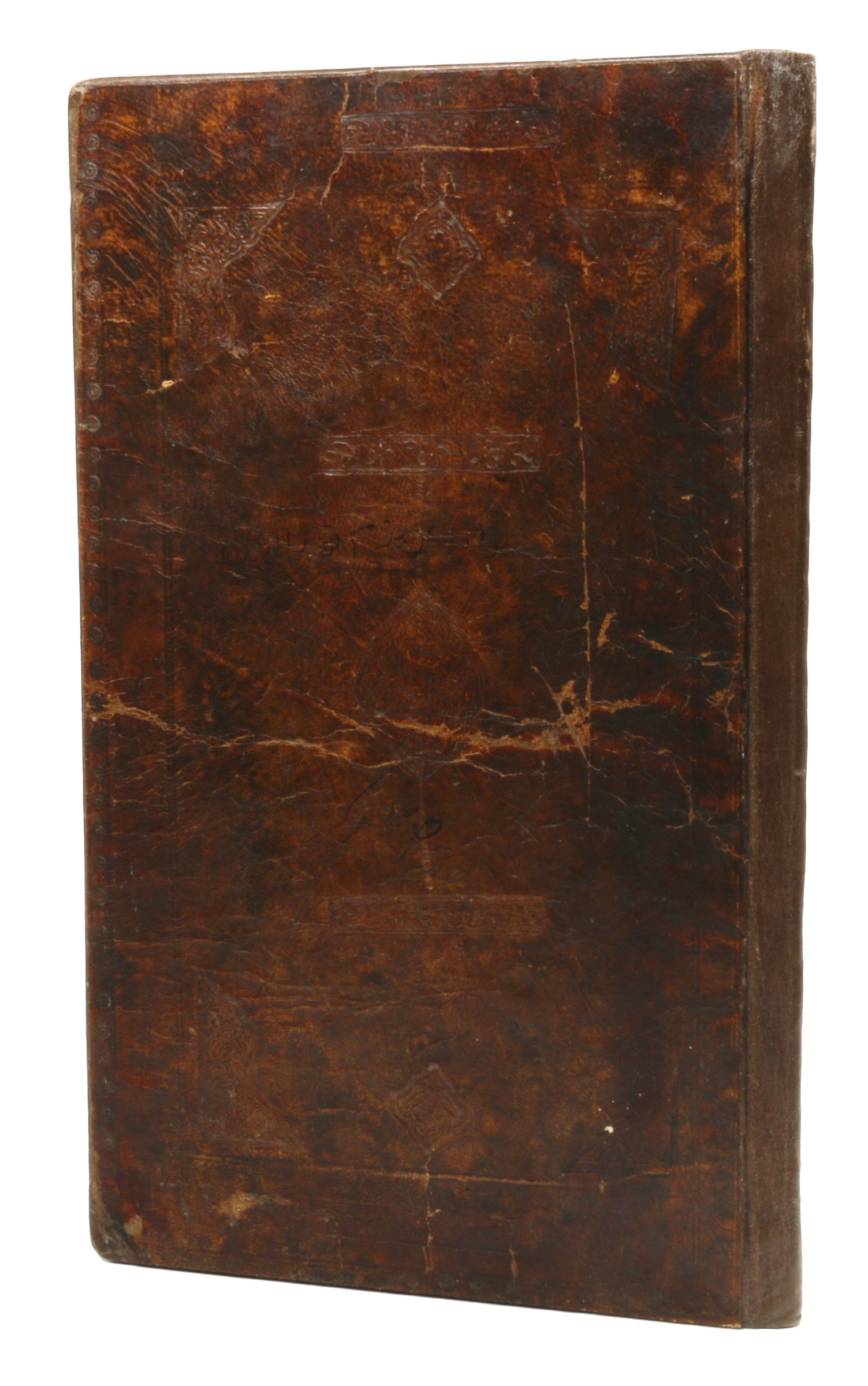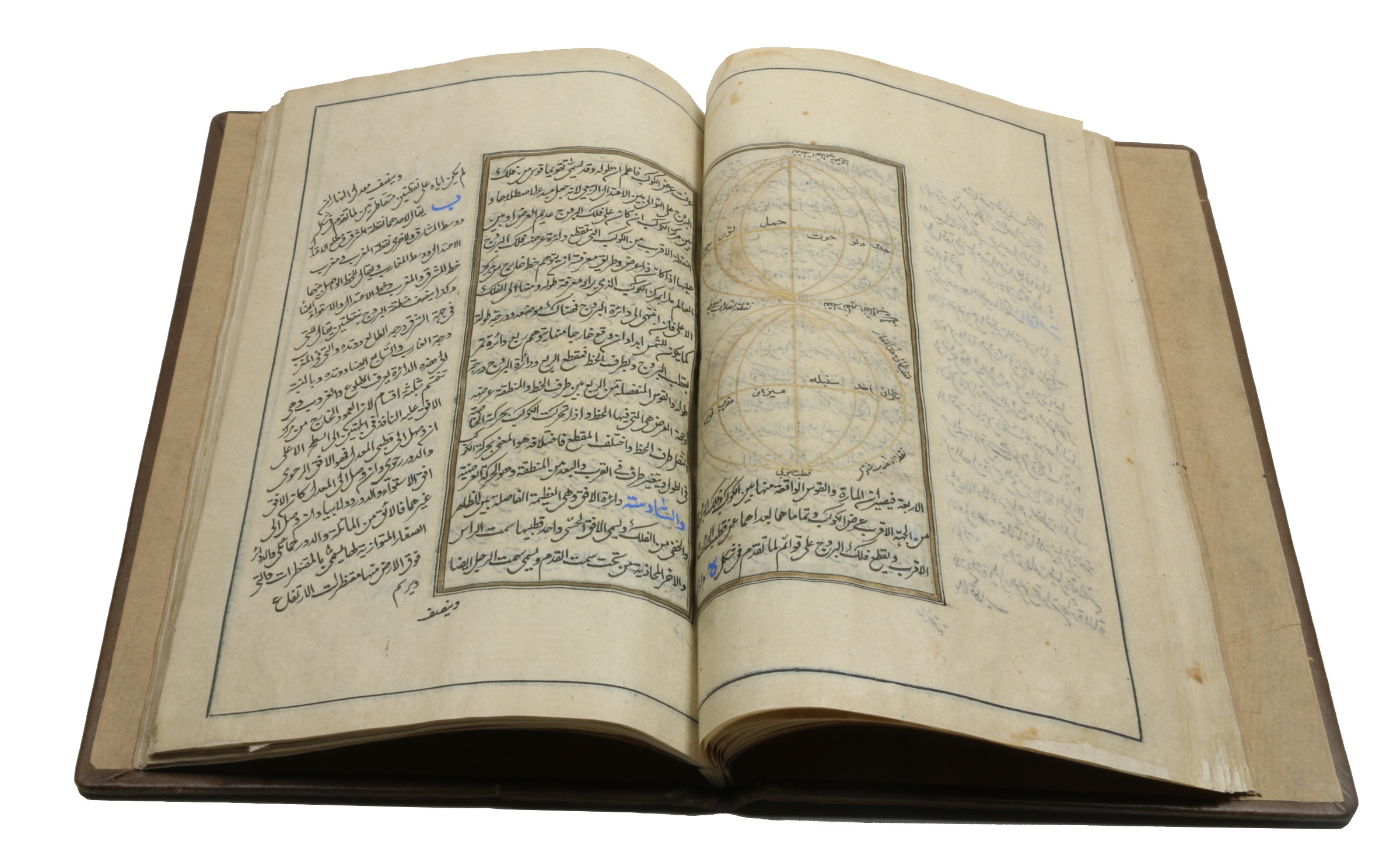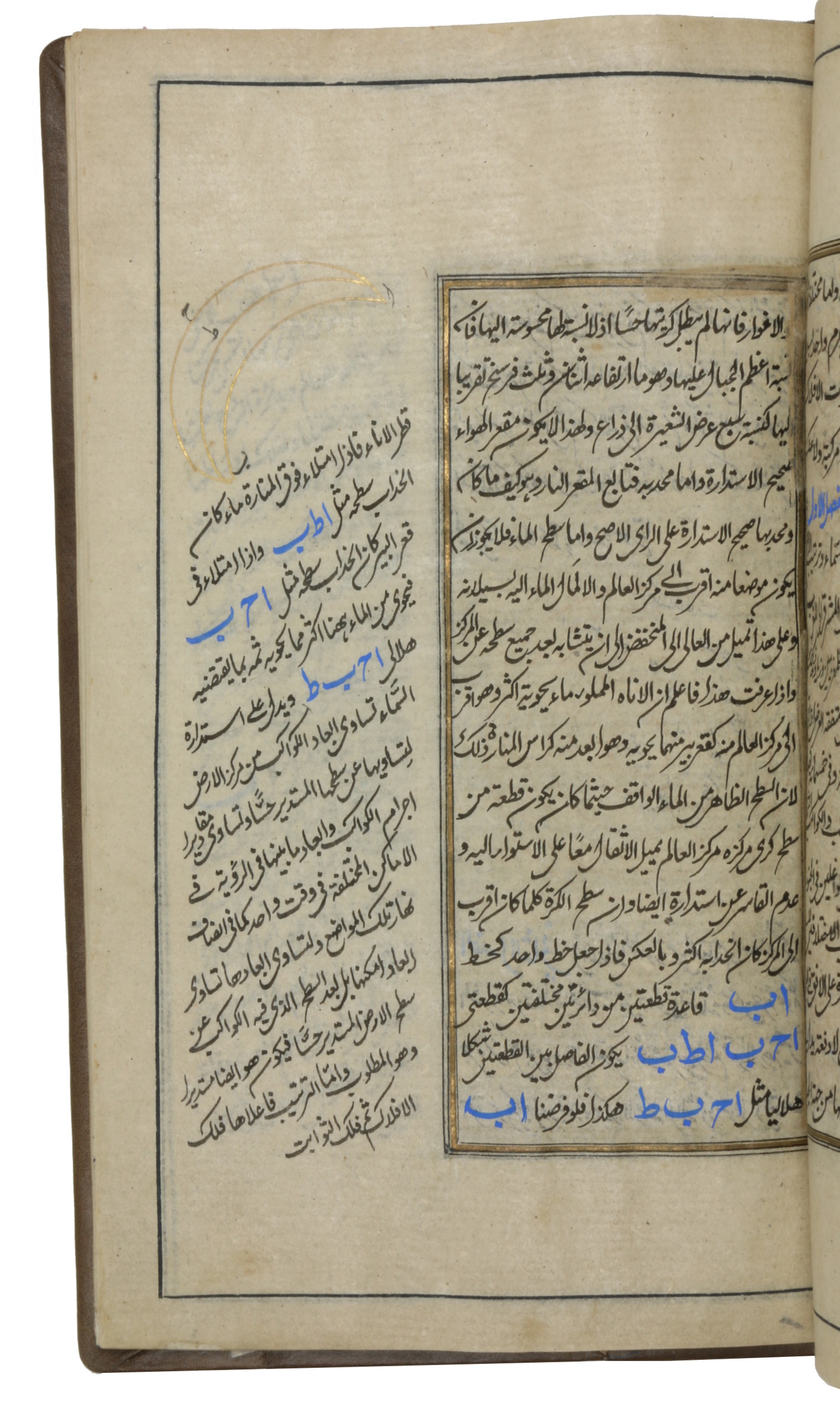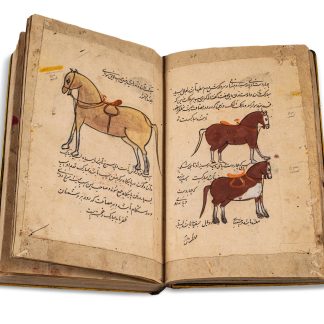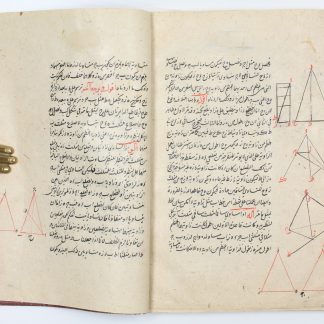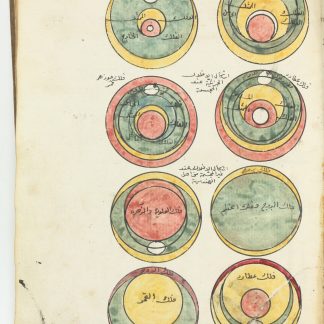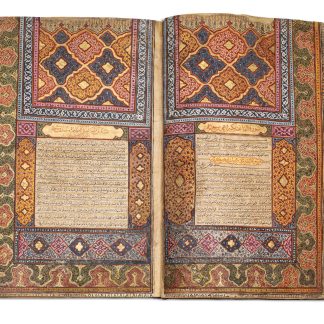Astronomical manuscript
Sullam Al-Aflak (Süllemü'l-eflak). [The Stairs of the Orbits].
Tall 8vo (164 x 268 mm). 76 unnumbered pp. (70 written, 6 with borders only). Single column, 16 lines per extensum, black ink with emphases in blue within gilt, black and blue ruled borders throughout. Numerous gilt diagrams and glosses in the text and margins. Contemporary blindstamped full brown calf.
Astronomical manuscript for calculating the times of prayer (salat), one of the Five Pillars of Islam. As the length of each lunar cycle varies slightly from the average value and the lunar calendar can take no account of the four seasons of the year, "Ilm al-Falak", or astronomy, quickly became a respected science within Islam. Accurate calendar calculation was facilitated by government institutions, and court astronomers always occupied high positions within Muslim states.
The present manuscript, comprising a preface, five chapters, and an afterword, is stated to have been written with the aim of "knowing some of the attributes of Allah, who is the creator of the universe, by means of astronomy". Interestingly, the author makes it explicit that his work is based on mathematical calculations and therefore pertains not to astrology, but to astronomy in a strictly scientific sense. The universe is described according to the geocentric model, and Ptolemy is referenced by name.
The thoroughly annotated illustrations and subjects discussed include geometrical shapes (cones, squares, polygons); the order of planets; horoscopes; the positions of the planets relative to each other; the position of the Moon with respect to the Earth and the Sun; solar and lunar eclipses; perihelion and aphelion; the angles of incidence of the Sun to the Earth at sunset and sunrise on Thursday, Friday and Saturday; and the angle of incidence of the Sun relative to the horizon and geographical directions for determining the time of the morning prayer. Prayer times are calculated for fajr (morning), zuhr (noon), asr (afternoon), maghrib (evening), and isha (night).
Little is known about the author of the manuscript, an Indo-Islamic scholar who spent his much of his life in Mecca and Lucknow (Medina Leknev in Uttar Pradesh), and indeed his byname "al-Azimabadi" points to his origins in Patna (Azimabad) in Bihar, northeast India.
A very pretty and well-preserved scientific manuscript, meticulously illustrated throughout.
Cf. Aydin Sayili, The observatory in Islam and its place in the general history of the observatory (Ankara, 1960). Fuat Sezgin, Geschichte des arabischen Schrifttums VI (Leiden, 1978).

